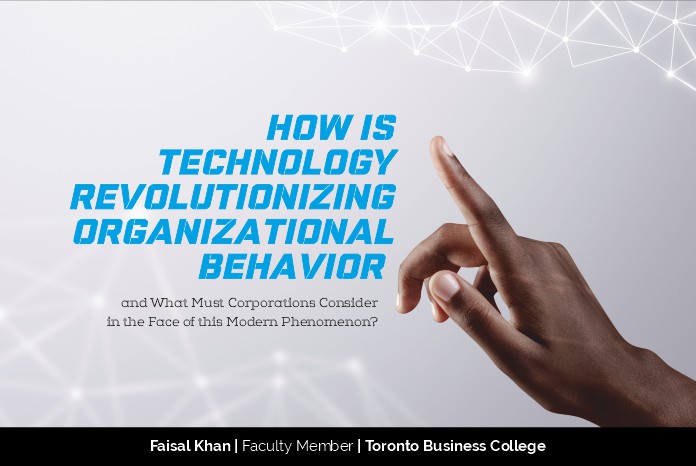Career and Technical Education (CTE) is reshaping the landscape of education, equipping students with practical skills that align closely with today’s job market demands. As traditional educational models strive to adapt, CTE has emerged as a powerful tool, bridging academic knowledge with real-world applications. Recent advancements have brought innovative methods and technologies into CTE, making it a dynamic field with growing global significance. This article explores the latest developments in CTE, its impact on student career readiness, and its integration into educational systems worldwide. By examining global trends, policy initiatives, and real-world success stories, we delve into CTE’s transformative potential and its future in education.
xotools.xyz offers a detailed exploration of this topic.
1. Definition and importance of Career and Technical Education (CTE)
Career and Technical Education (CTE) encompasses specialized programs that blend academic knowledge with practical skills training. These programs aim to prepare students for specific careers across diverse industries, including technology, healthcare, business, and the trades. Unlike traditional education, which primarily emphasizes theoretical knowledge, CTE focuses on equipping students with hands-on skills, making them ready for the demands of the modern workforce. CTE provides an alternative path to career readiness through pathways that span from high school courses to post-secondary certifications, particularly beneficial for students who may not pursue a four-year college degree.
CTE is crucial for bridging the skills gap, a pervasive challenge in global economies. As industries transform with technological advancements, the demand for specialized skills surges. CTE directly addresses this gap by aligning education with employer needs, equipping students with the competencies required in the modern workforce. This, in turn, fosters economic growth by enabling students to transition seamlessly into the job market. Furthermore, CTE enhances student engagement by offering practical, real-world applications, leading to improved retention and graduation rates. By providing accessible, practical education, CTE plays a vital role in building a resilient, adaptable workforce for today’s dynamic economy.

2. Recent advancements and innovations in CTE programs
Career and Technical Education (CTE) programs are undergoing a transformation thanks to recent advancements. These innovations, including cutting-edge tools and approaches, are enhancing both student learning and career preparedness. One notable example is the integration of virtual and augmented reality (VR/AR) technology. This integration allows students to experience realistic simulations of tasks and environments they will encounter in their chosen fields. The hands-on digital learning provided by VR/AR improves skill acquisition and reduces the risks associated with training in fields like healthcare, engineering, and construction.
Another major advancement is the growing use of artificial intelligence (AI) and data analytics to personalize CTE education. These technologies help tailor lessons to each student’s individual strengths and weaknesses, creating a more customized learning experience. Furthermore, partnerships with industry leaders have increased, providing students with direct access to internships, apprenticeships, and mentorship from professionals.
CTE programs are now incorporating “green” skills, emphasizing sustainable practices and eco-friendly technologies. This shift reflects the growing demand for environmental responsibility across industries. By embracing these innovations, CTE programs not only equip students with the skills needed for today’s job market but also prepare them for future trends. This ensures their adaptability and high skill level in a rapidly evolving, tech-driven, and sustainable job market.

3. Impact of CTE on student career readiness and skill development
Career and Technical Education (CTE) plays a vital role in preparing students for their future careers by fostering both skill development and career readiness. It bridges the gap between the theoretical knowledge gained in academics and the practical demands of the workplace. Through hands-on training and industry-specific instruction, CTE equips students with the practical skills essential for success in their chosen fields. This combination of technical expertise and real-world experience gives students a competitive edge in the job market, enabling them to confidently transition into their chosen careers.
CTE’s primary advantage lies in its emphasis on foundational skills such as critical thinking, problem-solving, and teamwork. These crucial competencies are highly valued in nearly every industry, equipping students with the ability to work effectively and adapt to evolving environments. Furthermore, CTE prioritizes technical expertise specific to each career path, ranging from healthcare and information technology to culinary arts and automotive repair. This specialized training enhances employability by providing students with the skills necessary to excel in their chosen fields.
Career and Technical Education (CTE) programs, with their emphasis on career readiness, often see increased student engagement and higher retention rates. This is because students recognize the direct connection between their education and future career success. Students involved in CTE programs also have higher rates of post-secondary enrollment and job placement, as they are well-prepared for either immediate employment or further training. In conclusion, CTE cultivates a skilled, confident, and career-ready workforce, supporting economic growth and mitigating the skills gap in many high-demand industries.

4. Integration of CTE in traditional educational curriculums
By integrating Career and Technical Education (CTE) into traditional educational curriculums, schools are revolutionizing how students prepare for future careers. This approach merges academic knowledge with practical, hands-on skills, creating a more comprehensive learning experience. Many schools now incorporate CTE pathways within core subjects, allowing students to explore technical fields while fulfilling standard graduation requirements. This not only enriches the learning process but also exposes students to diverse career options at an earlier age, empowering them to make informed decisions about their professional futures.
Schools have embraced flexible scheduling and hybrid learning models to accommodate Career and Technical Education (CTE) integration. This approach allows students to divide their time between traditional academic courses and specialized CTE training. Crucial to this effort are partnerships between schools, community colleges, and local industries, which offer students access to dual-credit courses, apprenticeships, and industry-recognized certifications, further developing their skills and preparing them for future success.
Through the integration of Career and Technical Education (CTE) with traditional academics, educational institutions develop a comprehensive curriculum that addresses both college preparedness and career-oriented aspirations. This balanced approach empowers students to thrive in a range of professional fields.
5. Global trends and international comparisons in CTE adoption
Career and Technical Education (CTE) is gaining international recognition as nations understand the vital role of skill-based learning in preparing students for the workforce. Countries like Germany, Switzerland, and Singapore have established robust vocational education systems that seamlessly integrate CTE at the secondary level, equipping students with industry-specific skills prior to entering the job market. These well-developed systems serve as inspiration for other nations seeking to enhance their own CTE programs.
Recent years have witnessed a surge in funding and resources allocated to Career and Technical Education (CTE) by nations such as the United States, Australia, and Japan. This investment is driven by a focus on aligning CTE programs with evolving industry demands, particularly in fields like technology, healthcare, and renewable energy. Globally, there is also a rising trend towards integrating sustainability and digital literacy into CTE curricula, aiming to meet the requirements of the modern global job market.
Comparative studies show that nations with robust Career and Technical Education (CTE) systems tend to experience lower youth unemployment rates and a more seamless transition from school to work. This demonstrates the effectiveness of CTE in cultivating a skilled and adaptable workforce that thrives in the global economy.
6. Government policies and funding for CTE initiatives
Government policies and funding play a vital role in propelling Career and Technical Education (CTE) initiatives forward. This is because they directly impact the accessibility, quality, and alignment of CTE programs with the demands of the workforce. Recognizing the significance of CTE in bridging skills gaps and driving economic growth, many governments are increasing their investment in CTE programs at both the secondary and post-secondary levels. The United States, for instance, has enacted the Strengthening Career and Technical Education for the 21st Century Act (Perkins V), which provides federal funding to support CTE programs. This legislation focuses on enhancing access to high-quality career pathways and strengthening partnerships between schools and industry.
Likewise, European nations have implemented policies to foster Career and Technical Education (CTE) integration and incentivize industry collaboration, especially in sectors with high demand, such as technology and renewable energy. Countries like Canada and Australia are similarly prioritizing funding for CTE programs addressing regional labor shortages, offering grants and subsidies to stimulate student participation.
These policies not only broaden program access but also facilitate the creation of contemporary curriculums that align with current industry standards. Through their investment in Career and Technical Education (CTE), governments contribute to a robust pipeline of skilled workers, invigorate local economies, and empower students with the essential knowledge and skills necessary to excel in today’s competitive job market.
7. Success stories and case studies from schools and institutions
The transformative power of Career and Technical Education (CTE) on students and communities is evident in numerous success stories from schools and institutions. A prime example is the Miami-Dade County Public Schools in Florida, which has implemented a comprehensive CTE program offering pathways in aviation, healthcare, and information technology. This program demonstrates the effectiveness of hands-on training and industry partnerships by boasting high graduation rates and preparing students for immediate employment or further education.
The North Carolina CTE program has achieved remarkable success, with over 90% of its students graduating. Furthermore, a significant number of these graduates secure jobs in their fields even before completing their studies. This impressive achievement is a result of strong partnerships with local businesses, which provide students with valuable real-world experience through internships and apprenticeships.
Switzerland’s vocational education system is widely recognized as a model for successful Career and Technical Education (CTE) internationally. Swiss students participate in a dual-track approach, balancing classroom instruction with real-world apprenticeships in diverse industries. This system fosters high youth employment rates and produces highly skilled graduates who are prepared to make a smooth transition into the workforce.
These success stories demonstrate the effectiveness of CTE programs in boosting individual student achievement and fostering broader economic stability. By developing a skilled, prepared workforce, CTE programs directly address the needs of modern industries.
8. Challenges and obstacles facing the implementation of CTE programs
While Career and Technical Education (CTE) offers numerous advantages, its effective implementation is hampered by several challenges. A major obstacle is the lingering stigma associated with vocational education. It is frequently viewed as an inferior alternative to traditional college paths, discouraging students and parents from pursuing CTE. This misconception hinders enrollment and limits access to crucial funding.
Furthermore, many schools struggle with resource constraints, such as insufficient funding for essential equipment, materials, and qualified instructors. This lack of investment can result in outdated curriculums and inadequate training facilities, thereby compromising the overall quality of CTE programs. Moreover, the rapid pace of technological advancements makes it difficult for CTE programs to stay current, as they must constantly update their offerings to remain aligned with evolving industry standards.
Building partnerships with local businesses is another hurdle. These partnerships are vital for securing internships and job placements for students. In certain regions, there’s a disconnect between educational institutions and industry requirements, leading to a persistent skills gap despite CTE initiatives. Overcoming these obstacles is essential for maximizing CTE’s potential and ensuring graduates are well-equipped for successful careers.
9. The role of technology and digital tools in enhancing CTE
Technology and digital tools are essential for advancing Career and Technical Education (CTE) by offering innovative ways to develop skills and engage learners. The integration of virtual reality (VR) and augmented reality (AR) technologies enables students to participate in immersive simulations, providing real-world experiences without the inherent risks. For instance, students in healthcare programs can practice medical procedures in a safe, virtual environment, significantly boosting their confidence and competence before working in actual clinical settings.
Furthermore, online learning platforms and digital resources have broadened the availability of CTE courses, allowing students to learn independently and investigate a wider range of fields than what is accessible in their local areas. These platforms frequently incorporate interactive elements, enhancing the learning experience and making it more engaging and effective.
Furthermore, the application of data analytics and artificial intelligence (AI) empowers educators to tailor learning experiences. By pinpointing each student’s strengths and weaknesses, this personalized approach provides the necessary support to guide them towards their desired career goals.
Technology and digital tools significantly improve the quality of CTE programs, equipping students with the technological skills and innovative mindset essential for success in today’s rapidly evolving job market, which increasingly demands technological proficiency.
10. Future prospects and potential developments in CTE education
Career and Technical Education (CTE) is poised for a bright future, with exciting developments that aim to meet the changing demands of the workforce and society. A major trend is the growing integration of STEM (science, technology, engineering, and mathematics) into CTE programs. As industries increasingly rely on technology, a solid foundation in STEM skills will be crucial for students to thrive in the high-demand careers of tomorrow.
Furthermore, the increasing prominence of soft skills, including communication, teamwork, and problem-solving, will influence CTE curriculum development. Programs are expected to integrate training that cultivates these skills in conjunction with technical expertise, ensuring that graduates possess a comprehensive skillset and the ability to adapt to evolving demands.
Moreover, the relentless progress of digital technologies, encompassing artificial intelligence, machine learning, and automation, will necessitate curriculum updates and foster the development of novel CTE pathways. With the emergence of new industries and the transformation of existing ones, CTE programs must maintain their adaptability and responsiveness to these evolving dynamics.
Finally, enhanced collaboration between educational institutions, industry partners, and policymakers will play a crucial role in shaping the future of CTE. By working together, stakeholders can ensure that CTE programs remain relevant, accessible, and aligned with the needs of both students and employers, ultimately fostering a more skilled workforce for the future.
In conclusion, Career and Technical Education (CTE) plays a pivotal role in preparing students for successful careers by providing practical skills and industry-relevant knowledge. With ongoing advancements, global trends, and supportive government policies, CTE is poised for continued growth and evolution. By addressing challenges and embracing technology, educational institutions can enhance CTE programs and ensure that students are equipped to thrive in a dynamic job market. Ultimately, CTE fosters a skilled workforce that contributes to economic prosperity and societal well-being.
xotools.xyz









